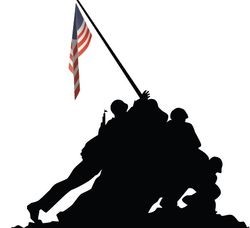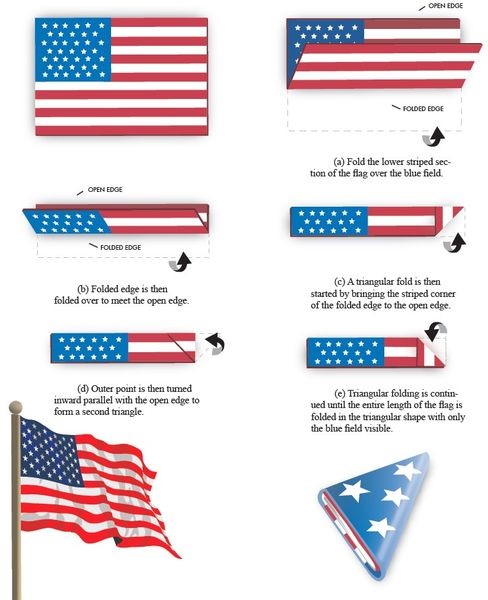The World We Live In: Respecting the Flag
![]()
Respecting the Flag
This text has been provided courtesy of the Department of Veterans Affairs, Office of Public Affairs.
“I pledge allegiance to the flag of the United States of America and to the Republic for which it stands, one Nation under God, indivisible, with liberty and justice for all.”
Important Things to Remember
The Pledge of Allegiance to the Flag should be rendered by standing at attention facing the flag with the right hand over the heart. If not in uniform, a person should remove his or her hat with the right hand and hold it at the left shoulder, with the hand over the heart. Persons in uniform should remain silent, face the flag, and render the military salute.
Display the U.S. flag every day, but especially on national and state holidays. On Memorial Day, the flag should be flown at half-staff in the forenoon (sunrise until noon), then raised to its normal position at the top of the staff. When raising the flag to half-staff, first raise it to the top of the staff, then lower it half-way. When lowering a flag that has been flying at half-staff, first raise it to the top of the staff, then lower it all the way. The U.S. flag should be displayed on or near the main building of every public institution, in or near every school on school days, and in or near every polling place on election days. Always hoist the U.S. flag briskly. Lower it slowly and ceremoniously.
Things Not to Do
Never show disrespect to the U.S. flag. Never dip (lower quickly and then raise) the U.S. flag to any person or thing. Regimental colors, state flags and organization or institutional flags are dipped as a mark of honor. Never display the U.S. flag with the field of stars at the bottom, except as a distress signal. Never let the U.S. flag touch anything beneath it — ground, floor, water or merchandise. Never carry the U.S. flag horizontally, but always aloft and free.
Always allow the U.S. flag to fall free — never use the U.S. flag as drapery, festooned, drawn back or up in folds. For draping platforms and decoration in general, use blue, white and red bunting. Always arrange the bunting with blue above, the white in the middle and the red below. Never fasten, display, use or store the U.S. flag in a manner that will permit it to be easily torn, soiled or damaged in any way. Never use the U.S. flag as a covering or drape for a ceiling. Never place anything on the U.S. flag and never have placed upon it, or on any part of it, or attached to it, any mark, insignia, letter, word, figure, design, picture or drawing of any nature.

Many Marines gave their lives to raise the American flag on Mt. Suribachi on the island of Iwo Jima in 1945. Based on a photograph by Joseph Rosenthal, the Marine Corps War Memorial depicts this sacrifice. Located near Arlington National Cemetery, it is a tribute to all the Marines who have fallen in combat.
The U.S. flag should not be embroidered on such articles as cushions, handkerchiefs, and the like; printed or otherwise impressed on paper napkins or boxes or anything that is designed for temporary use and discarded; or used as any portion of a costume or athletic uniform. However, a flag patch may be affixed to the uniform of military personnel, fire fighters, police officers and members of patriotic organizations. Advertising signs should not be fastened to a staff from which the flag is flown.
Folding the Flag

When the U.S. flag is no longer in suitable condition for display, it should be destroyed in a dignified way, preferably by burning. Many Veterans groups per- form this service with dignified, respectful flag retirement ceremonies.

